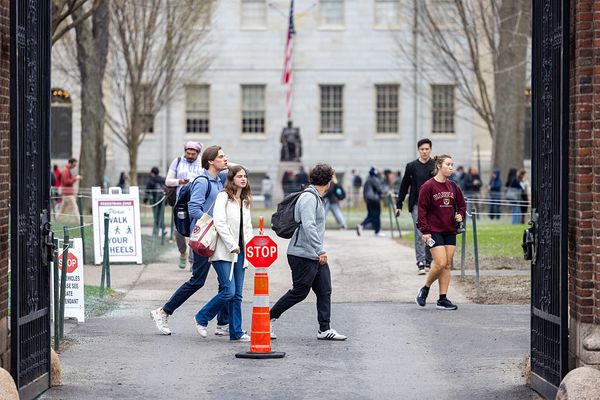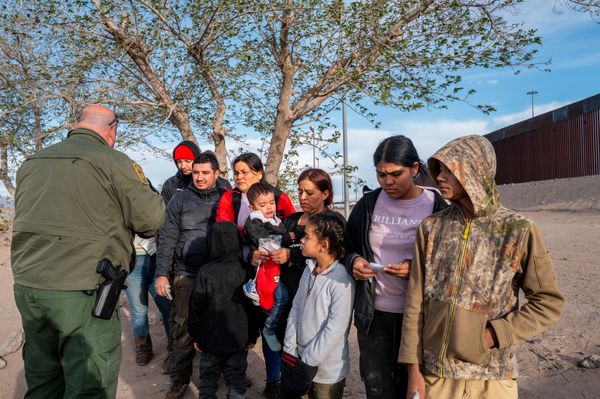
Donald Trump’s announcement that he was installing himself as the chair of the John F Kennedy Center, Washington DC’s temple to the performing arts, might have been mistaken for something petty or trivial – another random, Pollock-esque splatter of the policy paintbrush against the canvas of the world. On his favoured social media site he posted an image, presumably AI-generated, of himself as a dinner-jacketed orchestral conductor – the macho maestro of the US. But this is more than personal: it is political, and points towards the president’s wider project.
To understand what is going on, it is necessary to consider Trump’s favourite European authoritarian, Viktor Orbán. Hungary’s prime minister has chipped away at his country’s constitution and judiciary. But a no less powerful tool has been his attention to parts of society often regarded as unimportant compared with a country’s constitution. Alongside crushing independent media, Orbán’s government has co-opted the arts, appointing right-leaning directors to theatres, and instigating nationalist art exhibitions. Orbán understands that culture creates the climate for emotion and memory, imprints national myths, and – often intangibly – acts on politics.
The Kennedy Center is low-hanging fruit for Trump, in that he has some direct power over it. Trustees are presidential appointees, and federal funding is allocated for the upkeep of its building. It was founded as a bipartisan institution, and has normally had a mix of political views on its board – but that principle is capable of being abused, and it is being so right now. A statement, emphasising this bipartisan history, appeared and then vanished from the centre’s website this week. Over the past few days, board members have been fired and 13 compliant ones – including Usha Vance, the wife of the vice-president, JD Vance – appointed. The president of the centre has been sacked, and a new interim (and unqualified) executive director announced: the foreign policy adviser Richard Grenell. “NO MORE DRAG SHOWS, OR OTHER ANTI-AMERICAN PROPAGANDA”, was Trump’s salvo. (The centre had staged a minuscule number of events featuring drag acts, among the vaster diet of Shostakovich, Beethoven and Stravinsky.) On Wednesday, Trump was formally voted in by the board. “Unanimously”, his social media post said: a nice Putin-esque touch. “There’s no more woke in this country,” Trump told reporters. On Thursday morning, the entire Kennedy Center website was down, with “technical difficulties”.
Other federally supported institutions such as the National Gallery of Art and the Smithsonian Institution, DC’s consortium of national museums, are also vulnerable. After Trump’s executive order of 20 January, they have said they will be closing their diversity, equity and inclusion (DEI) offices. It’s a similar story with the National Endowment for the Arts (NEA), the federal body that offers funding to arts organisations. A document that I have seen warns that NEA arts grants now need to be reviewed for the presence of “certain ideological terms”, including “climate change”, “environment”, “immigrant”, “lesbian”, “gay”, “trans”, “drag” and even “equal rights”. Applicants are being told that patriotic proposals relating to the 250th anniversary of the Declaration of Independence will be prioritised. The NEA is a very different entity from Arts Council England. It does not give revenue funding for organisations – it has a limited budget that offers support to individual projects. Nevertheless, it is a respected body, and it has just received a full-fronted ideological assault on its operations.
These are some of the direct results of Trump’s first three weeks. Indirect consequences will take longer to crystallise. US arts institutions rely on corporate sponsorship, but corporates who want anything from the government are moving smartly in line with Trump. The administration has insisted that the stop on DEI initiatives must also be observed by government contractors. Among such firms is the consultant Booz Allen Hamilton, which had long boasted of its inclusive policies for LGBTQ+ employees. In the past few days it has withdrawn its sponsorship from this spring’s WorldPride in Washington DC. Again, webpages have simply vanished, or, in the case of a PR agency connected to Booz Allen Hamilton, remain ghostlike in the form of 404 error messages.
The speed and extremity of these measures is sending Washington reeling. There is the bizarre prospect of Trump exerting his personal programming ideas on the national performing arts institution (will it be the Village People, Kid Rock and Carrie Underwood from now on?) Nothing is too minor for his scattergun attention, after all: an idea for a “national garden of American heroes” was instigated in an executive order of 29 January. I will leave to your imagination the full horror of the kitsch bronzes that might spring up as a result of that initiative.
The great bulwark against all of this, though, is the US tradition of philanthropists and trusts as the primary funders of the biggest arts organisations. Few receive federal funds. Powerful foundations such as Getty are – at least at present – sailing smoothly on despite Trump’s agitations: see also powerful grant-giving bodies such as the Mellon Foundation and the Ford Foundation (the latter’s website still states that “diversity, equity and inclusion are core to our mission and to who we are”). Some of Trump’s measures will be legally challenged. Resistance will be mounted at the level of the state and the city. Los Angeles and Chicago are a long way, physically and spiritually, from DC.
From the perspective of the UK, Trump’s coup at the Kennedy Center may look clumsy, outlandish and an impossibility here. A month ago, though, his actions might have looked impossible in the US. A brief glance at Britain’s recent history should act as a warning. The Tories made a concerted attempt to pervert independent appointment processes in order to insert ideologically aligned people into positions of cultural power. Their success at so doing, however limited, illuminated the fact that the guardrails of liberal institutions are a tradition of shared values, rather than enforceable rules. The former culture secretary Nadine Dorries blatantly broke the British principle that government should be at arm’s length from the arts when she intervened in a funding process to insist on her own policy priorities. This looks subtle when compared with Trump’s brash interventions – but it’s a sign of the fragility of the arm’s-length principle and of how fiercely it should be protected.
John Maynard Keynes set up what was then called the Arts Council of Great Britain after the second world war for two reasons: to ensure the provision of culture across the country and to protect artists from direct political influence. You needed only look to Germany or Italy, or the Soviet Union, to understand how important that was. EM Forster, in a series of wartime broadcasts, laid out how political and artistic liberty were inextricably connected, and that there would need to be a fresh, postwar struggle “for the restoration and extension of cultural freedom”. As the memory of the war receded, the threat to the arts from fascism looked fanciful and distant. Now, maybe not so much.
Where to find hope in all this? I find plenty. Artists – history tells us – will turn out to be the most creative and subversive documenters of the historical moment, and among the most nimble resisters of society’s corruption. Trump will not win this fight.
Charlotte Higgins is the Guardian’s chief culture writer







